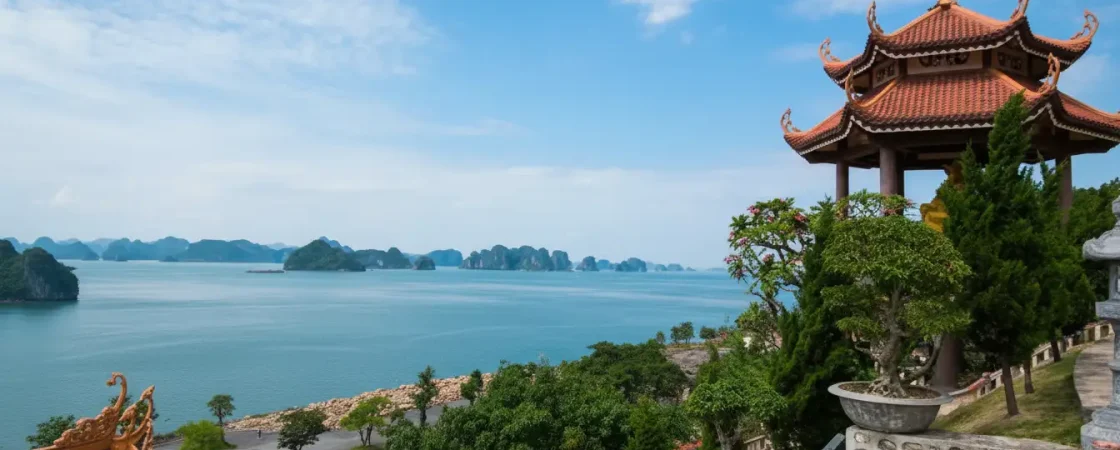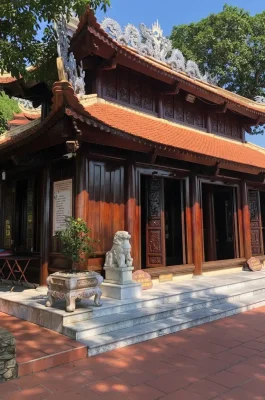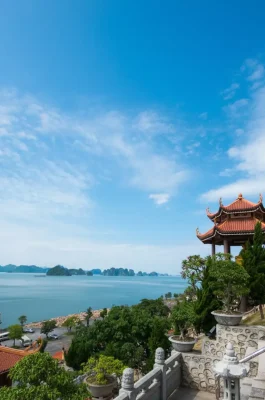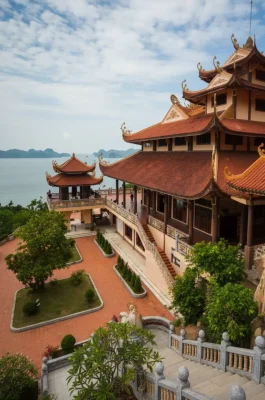Cai Bau Pagoda: A Coastal Sanctuary in Van Đồn
Cai Bau Pagoda, formally known as Thiền Viện Trúc Lâm Giác Tâm (Truc Lam Giac Tam Zen Monastery), offers a unique blend of spiritual tranquility and breathtaking natural beauty in Quảng Ninh Province. Located in Vân Đồn District, far from the noise of the city, this majestic coastal temple provides a perfect retreat for reflection, drawing both Buddhist devotees and curious travelers.
Location and Stunning Scenery
The pagoda boasts an extraordinary and strategic location. It rests against the mountainside and simultaneously faces the vast expanse of Bái Tử Long Bay, which is often called the “younger sister” of Ha Long Bay. This vantage point gives visitors a stunning panoramic view of the emerald waters dotted with numerous limestone islets. The secluded setting, combined with the sound of the ocean waves, creates a deeply peaceful and sacred atmosphere, making it one of the most picturesque temples in Vietnam.
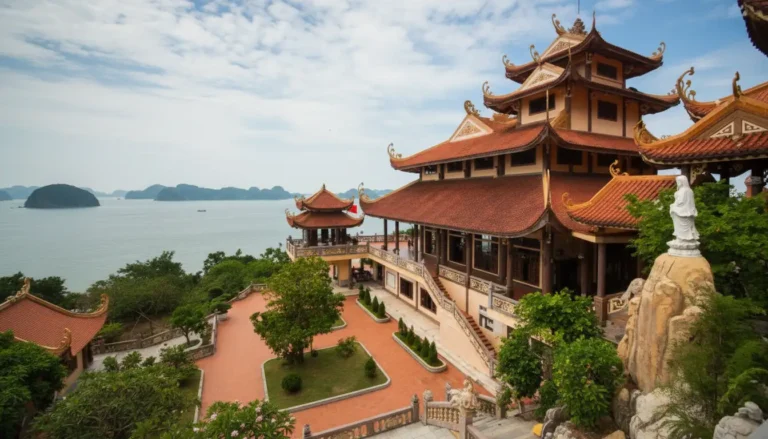
History and Reconstruction
The history of Cai Bau Pagoda is rooted in the glorious past of Vietnam. It was constructed on the old site of Phúc Linh Tự Pagoda, a temple with roots stretching back over 700 years to the Trần Dynasty. Historical records suggest that this area witnessed key events related to the Trần military’s victory against the Mongol invaders in the 13th century.
However, the modern structure is a significant reconstruction. Begun in 2007 and officially inaugurated in 2009, the project revived the historical and spiritual significance of the site. Today, the monastery follows the Trúc Lâm Zen lineage, a uniquely Vietnamese form of Buddhism.
Architectural Features and Spiritual Spaces
The monastery complex is spacious and features traditional Vietnamese pagoda architecture, although the design ensures a modern, harmonious feel that complements the rugged landscape.
The Main Sanctuary (Chính Điện): The large main hall is a two-story structure. The upper floor is dedicated to the worship of Shakyamuni Buddha, and the lower floor houses statues of Bodhisattvas. Intricate bronze carvings adorn the walls, depicting the life and pilgrimage of the Buddha.
Bell and Drum Towers (Lầu Chuông and Lầu Trống): These separate structures frame the main hall, containing a large bronze bell and a huge drum. Monks use them to mark time and important spiritual ceremonies, adding to the site’s tranquil ambiance.
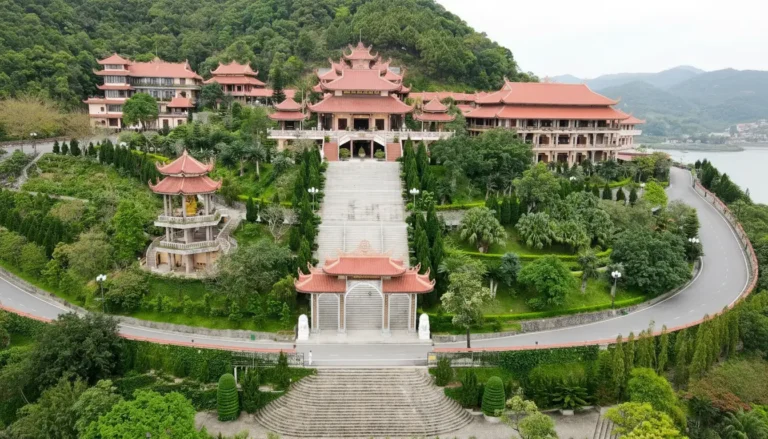
Essential Visitor Logistics
To respect the sacred nature of the monastery, guests should observe specific rules. The monastery highly values the sanctity of the place.
| Item | Details for Travelers |
|---|---|
| Address | ĐT334, Thôn 1, Vân Đồn, Quảng Ninh 200000, Vietnam. |
| Opening Hours | The pagoda generally welcomes visitors every day, from early morning (around 6:00 AM) until late evening (around 10:00 PM). Access is often 24 hours during major lunar holidays. |
| Entrance Fee | Entry to Cai Bau Pagoda is free of charge. The complex relies on voluntary donations for maintenance. |
| Etiquette | Visitors must dress modestly (covering shoulders and knees). Furthermore, the monastery strictly prohibits the sale of souvenirs on its campus, preserving a non-commercial atmosphere. Guests should maintain a quiet and respectful demeanor. |
| Additional Amenities | The monastery offers simple, complimentary vegetarian meals and overnight stays to visitors who request them, following the Buddhist practice of generosity. |
Consequently, a visit to Chùa Cái Bầu offers a powerful spiritual experience, allowing travelers to connect with Vietnam’s Buddhist culture while enjoying one of Quang Ninh’s most beautiful coastal views.
